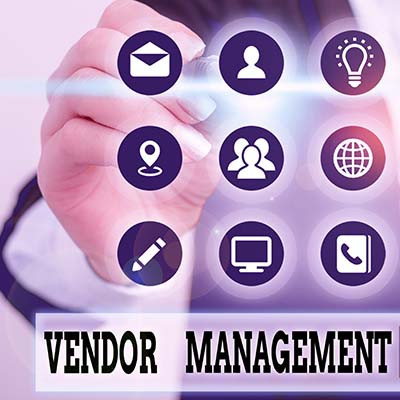JS Business Solutions Blog
Getting the right technology for your business can be confusing and downright frustrating if you don’t know what you are looking for. After all, technology is supposed to make life easier and keep your business more efficient and organized. With so many rapidly evolving technologies now available, it can be hard to choose which to deploy inside your business. Today, we’ll go through three tips that can help you identify and deploy the technology that will work for you.
People on average spend nearly 3-to-5 hours of their day on their phones. Today’s smartphones are not only one of the coolest pieces of technology ever invented, it legitimately could be one of the most useful devices any person could use for business; if they are willing to use it that way. Today, we will establish what smartphones are mostly used for and how to readjust your smartphone usage to be your most productive.
You might have encountered the term MSP while navigating our website, but what does it mean to be a managed service provider? Today we want to get into the nitty-gritty of what we do for our clients and how you can benefit from our services. It’s our goal to show just why managed services have completely changed the landscape of business as we know it today.
If the pandemic has proven anything, it’s that companies need to be flexible in their operations, perhaps more so now than ever before. However, this flexibility has also led many to reconsider what the office of the future looks like. Companies are starting to ask how much space is truly necessary and whether or not they actually need an office to remain operational.
Sometimes a business model or way of managing something complex comes along that changes the game for countless businesses, industries, and organizations. One such model is managed IT services, and it can effectively replace the way you used to manage your technology with a better, more efficient method. It can impact your budget, increase your bottom line, and save you countless hours throughout the workday.
Even when everything is going well, running a business can be challenging—all of that is to say that things are especially difficult when everything starts to go wrong, particularly in the realm of business continuity. While nobody likes to imagine the worst-case scenario, we always like to say that imaging the worst-case scenario can help you prepare for it, and it can take the sting away from dealing with it.
You may have seen us use the term “redundant” on this blog often, and if you are not necessarily familiar with how it might be used in the context of business technology, we understand how you could misconstrue the word in a negative light. However, redundancy is one of the most important concepts to understand in business technology, and it’s key to your business’ continued success.
Sometimes you might experience computer trouble and wonder when it’s time to call in the experts. After all, you don’t know how much you might break your budget, right? Depending on the issue, you might be able to resolve it yourself. We’ve put together three of the most common computer repair scenarios that you might encounter and how they should be handled.
Look, we get it; technology management is not easy, especially for small business owners who already wear a lot of hats. The last thing you want to do is add even more to your plate when you already have so much going on. That’s why we offer managed IT services to SMBs in the area. But what if we told you that managed IT services aren’t just for small businesses, but for all types of companies and organizations? Let’s discuss why this is the case.
As a business owner, you have relationships with your vendors that must be cultivated and maintained in some way on the off chance you need them for support. However, working with vendors can be stressful and downright frustrating at times. Let’s examine a specific situation that demonstrates these challenges and what you can do about it.
You may have heard of the RICE prioritization framework for developing new products, but we believe that it can be applied to not just products, but also to services and even project implementation practices. What is this framework, and how can you use it when developing new ideas for your business?
Now that many of us have been working remotely for the past 18 months, what are your thoughts on the concept of a remote or hybrid office? Have your opinions changed at all, or are you still clinging to your previously conceived notions of what it would be like? It does not help that some major companies, like Microsoft, are sending out mixed signals on their own experiences with remote work. What can we learn from these experiences?
One of the most important solutions for a small business to implement is a data backup and disaster recovery system. It is a crucial element of any business continuity plan, yet many organizations fail to implement one in an appropriate manner. Let’s discuss three of the best reasons you must consider data backup and disaster recovery now before it’s too late.
The traditional 40-hour workweek feels like a staple in the business world, where employees work 8 hour shifts and then head home for the day. This was not always the case, however, and there can be a case made that even the 40-hour workweek should be adjusted to at least some degree. Let’s take a look at the modern workplace, how it has changed, and how it can still be changed to better employees of all levels—including you.
Many businesses simply do not have the resources or budget to hire technicians to perform regular maintenance on their systems, let alone someone who is managing the technicians behind the scenes. The chief information officer, or CIO, is the one who would normally make these calls, but businesses that cannot hire an in-house CIO for whatever reason have the option of hiring a virtual CIO.
When it comes to your business technology, you shouldn’t settle for anything less than the best. Unfortunately, technology is one facet of running a company where many business owners feel they have the least amount of control, perhaps due to its many moving parts and overwhelming complexity. The question becomes one of how you want to approach managing your business’ technology and finding the right skill sets to do so.
The future can be unpredictable at best, especially in today’s times. You never know when your company will suffer from circumstances beyond your control, whether it’s a disaster that uproots your office or a pandemic that forces your entire workforce to transition to remote operations. Thankfully, even in today’s trying times, technology presents opportunities to overcome these challenges.
Upgrading technology can often come with risk. While you might get some return on your investment, will you get it back fast enough to actually make that investment worth it in the end? How can your technology solve problems that your company experiences, and how do you acquire the capital necessary to make significant upgrades? If you dig too deep into the details, you might find that it is difficult to move forward with these major decisions, preventing you from leveraging these amazing benefits. Here are four signs that will give you an idea that it’s time to upgrade your technology.






















